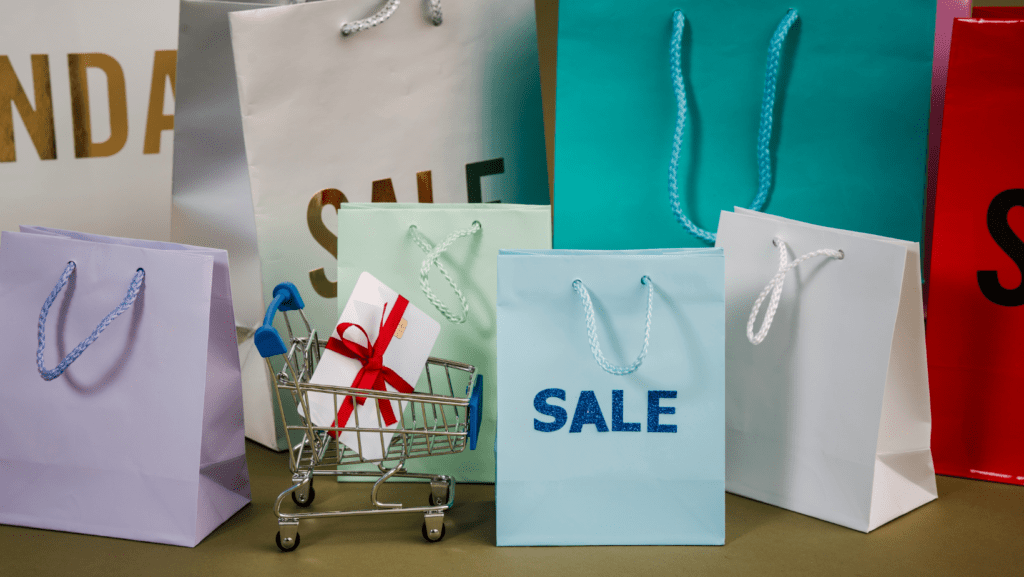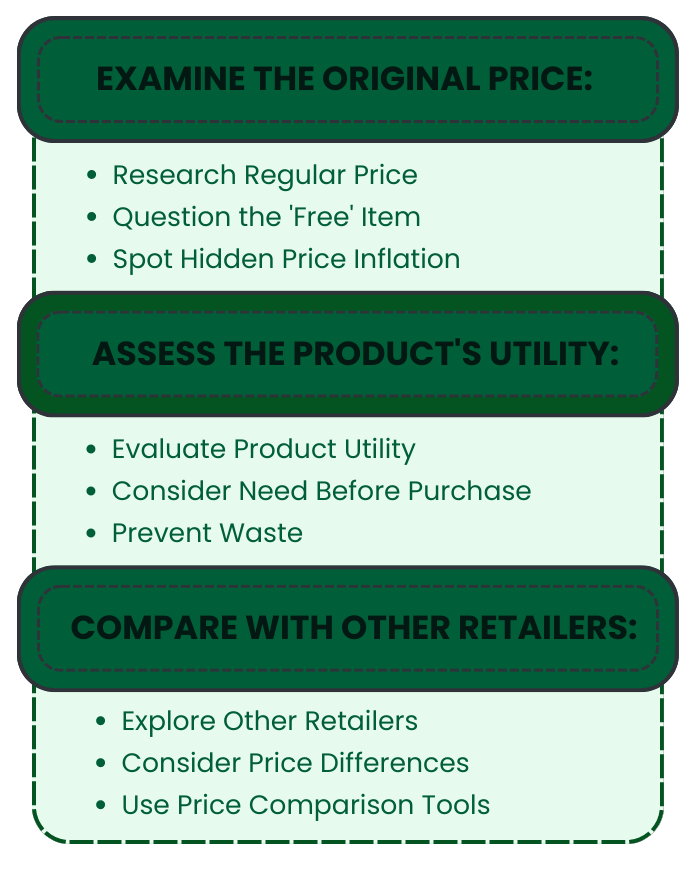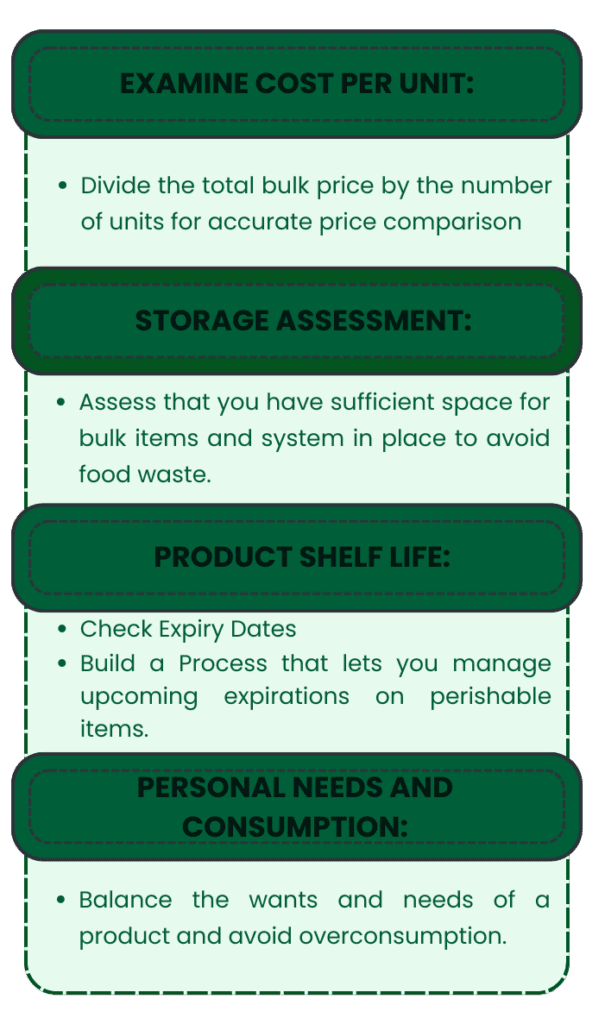
Shopping deals such as ‘buy one, get one free’ and bulk buying often seem too good to be true. And sometimes, they are. This article uncovers the economics behind these common promotions, explores their potential downsides, and offers tips on how to determine which deals are genuinely beneficial.
‘Buy One, Get One Free’ Explained
A ‘Buy One, Get One Free’ offer, often abbreviated as BOGO or presented as a 2-for-1 deal, is a popular sales strategy employed by retailers worldwide. The concept appears simple: you buy one product, and you receive an additional identical item at no extra charge. The psychological appeal of receiving something ‘free’ often encourages consumers to take advantage of these deals. However, the actual economics behind these offers can be more complex.
To understand how these offers work, let’s break down some of the economic terms and concepts involved:
- Sales Strategy: This refers to the plan a business uses to sell its products or services to customers. In the case of BOGO deals, the strategy is to attract customers with the perceived value of getting an extra product for free.
- Price-Sensitive Customers: These are consumers who are strongly influenced by price fluctuations in their buying behavior. A BOGO offer appears particularly attractive to these customers as it seems to offer substantial value.
- Unit Price: This is the cost of a single item or unit of measure of a product. In a BOGO deal, while it appears that the unit price is halved (since you get two for the price of one), this might not be the case, as we’ll see below.
While the deal seems straightforward and beneficial to the consumer, there’s a subtle catch. The retailer typically absorbs the cost of the ‘free’ item into the price of the first product. In other words, the initial product may be priced slightly higher to cover the cost of the second ‘free’ product. This pricing strategy ensures the retailer covers the costs associated with the deal and potentially even maintains their desired profit margins.
For example, let’s say a retailer sells a product typically priced at $5. When offering a BOGO deal, the retailer might increase the price to $7. So, when you ‘buy one, get one free’ for $7, you’re effectively paying $3.50 each, not the original $5, but not exactly ‘one free’ either.
This increase in price might be subtle and potentially go unnoticed by shoppers, particularly those entranced by the promise of a ‘free’ product. Thus, while BOGO deals can provide value in some circumstances, it’s crucial for consumers to understand the underlying economics and make informed purchasing decisions.
Understanding the Dynamics of Bulk Buying
Bulk buying is a popular purchasing method where consumers buy products in larger quantities than they usually would. This practice is commonly seen in wholesale markets and warehouse clubs, where products are packaged and sold in larger amounts. The primary allure of bulk buying lies in the potential for cost savings, which comes in the form of a reduced cost per unit. However, successful bulk buying hinges on a variety of factors, including sufficient storage space and timely consumption of the products.
To grasp the ins and outs of bulk buying, it can be helpful to understand some key economic terms:
- Unit Cost: This refers to the cost for a single item or a specific measurement of a product. In bulk buying, the unit cost typically decreases as the quantity increases.
- Warehouse Clubs and Wholesale Markets: These are retail stores that sell products in large quantities. They are designed to cater to businesses and large families that require high volumes of products.
- Perishable and Non-Perishable Items: Perishable items are products that spoil or become less effective over time, such as food or certain beauty products. Non-perishable items, on the other hand, have a long shelf life and don’t degrade in quality over time, like canned goods or cleaning supplies.
Bulk buying often appears as a smart way to economize. After all, the unit price — the cost per individual item or quantity — is frequently lower compared to when purchasing smaller quantities. This can present significant savings, especially when buying non-perishable items or products that a household uses regularly.
For example, if a can of beans costs $2, but a pack of six costs $10, the cost per can in the pack is roughly $1.67. In this scenario, bulk buying reduces the unit cost by 17%. This can lead to substantial savings over time, especially for items that a household consumes frequently.
However, the actual savings from bulk buying might not always be as beneficial as they seem, primarily due to factors like storage constraints and the perishability of the products.
Consumers need sufficient storage to accommodate the larger quantities that come with bulk buying. This can be challenging for individuals with limited storage space. Additionally, consumers need to use the products before they expire or spoil, which can be a particular concern with food items and other perishables. If products go unused and must be discarded, the potential savings from bulk buying quickly diminish.
In short, while the economics of bulk buying can favor the consumer, it’s not always a guaranteed win. Understanding your own consumption habits, storage capacity, and the perishability of the products in question is crucial to truly benefit from bulk buying.
Making Informed Shopping Decisions
While the allure of ‘buy one, get one free’ and bulk buying deals can be hard to resist, it’s crucial to consider the potential drawbacks of these offers. Shoppers who understand the underlying economics can make informed decisions that truly benefit their budget and lifestyle. But how can this be achieved?
Tips for ‘Buy One, Get One Free’ Deals
When confronted with a ‘Buy One, Get One Free’ (BOGO) or 2-for-1 deal, it’s easy to be enticed by the potential savings. However, understanding the underlying factors of these deals can ensure you’re making the most out of your shopping experience. Here are some detailed guidelines to help you make smart decisions:
- Evaluate the Original Price:
- Research Regular Price: Look up the item’s usual price before considering a BOGO offer. This step helps ascertain if the deal is actually a bargain.
- Question the ‘Free’ Item: Remember, the ‘free’ item might not be truly free if the deal’s price is significantly higher than the regular price.
- Spot Hidden Price Inflation: Familiarize yourself with the regular prices to detect hidden increases, where the cost of the ‘free’ item may be built into the first item’s price.
- Assess the Product’s Utility:
- Evaluate Product Utility: Think about whether both items in a BOGO offer will actually be used. A deal is only worthwhile if both products serve a purpose.
- Consider Need Before Purchase: Reflect on the necessity of the second item. If it’s likely to sit unused, the offer loses its appeal.
- Prevent Waste: Assess whether the second item will be consumed or used enough to justify the expense. Buying unnecessary products leads to wasteful spending.
- Compare with Other Retailers:
- Explore Other Retailers: Remember, different stores may offer varying prices for identical products. It’s worthwhile to shop around.
- Consider Price Differences: Some retailers might offer better prices, potentially lower than the ‘half’ price in a BOGO deal.
- Use Price Comparison Tools: Leverage online price comparison platforms to ensure you’re securing the best value. Making informed decisions can save you money.
By following these strategies, you can ensure that you’re making savvy choices when shopping with ‘Buy One, Get One Free’ offers. It’s all about balancing te appeal of the deal with its actual value and your individual needs. Remember, the goal isn’t just to spend less upfront, but also to derive maximum utility from your purchase while avoiding wastage.

Tips for Bulk Buying
When contemplating the merits of bulk buying, a practice where shoppers purchase items in larger quantities to theoretically save money, it’s crucial to navigate this territory with a clear strategy and thoughtful consideration. Shoppers need to employ a detailed and well-informed approach, which includes several key steps:
- Cost per Unit: Calculate this by dividing the total bulk price by the number of units. It gives an accurate price comparison, showcasing potential savings.
- Storage Assessment: Ensure sufficient storage space is available before making a bulk purchase. Adequate storage prevents product waste and maintains item quality.
- Product Shelf Life: For perishable goods, check expiration dates. Only buy bulk quantities that can be used before spoilage to avoid wastage and unnecessary expense.
- Personal Needs and Consumption: Consider usage rates and actual need for the product. A deal is beneficial only if it doesn’t lead to overconsumption or storage issues.
It’s essential to consider personal needs, consumption habits, and storage space. A deal is only truly beneficial if the product gets used before it expires and doesn’t lead to overconsumption or storage problems. By keeping these tips in mind, shoppers can navigate the complex world of shopping deals and make choices that genuinely save money and meet their needs.

FAQs
1. How do ‘buy one, get one free’ deals work? These deals involve paying for one item and receiving an additional one for free. However, the cost of the ‘free’ item may be included in the price of the first product, reducing the actual savings.
2. What does bulk buying involve? Bulk buying means purchasing large quantities of a product at once, usually at a lower cost per unit. This approach can lead to significant savings, but it requires adequate storage space and careful planning to avoid waste.
3. What are the downsides of ‘buy one, get one free’ deals and bulk buying? The disadvantages include potential price inflation in ‘buy one, get one free’ deals, storage issues with bulk buying, and the possibility of products expiring before they can be used.
4. How can I determine if a deal is genuinely good? The best way is to calculate the cost per unit, compare it with the regular price, and consider your personal needs, consumption habits, and available storage space.
5. Are ‘buy one, get one free’ and bulk buying deals always beneficial? Not always. While these deals can lead to cost savings, they can also result in waste and unnecessary spending if not carefully considered.
Conclusion
In conclusion, while ‘buy one, get one free’ and bulk buying offers can be attractive, their true value lies in a careful understanding of their underlying principles. These promotional strategies may seem too good to be true, but upon closer inspection, it’s clear that they come with specific caveats. BOGO deals often incorporate the cost of the ‘free’ item into the price of the first product, while bulk buying requires careful consideration of storage capabilities, product shelf life, and personal consumption habits.
By taking the time to dissect these offers and evaluating them against the original price, utility, and the prices at other retailers, consumers can derive maximum benefits. In addition, using price comparison tools and having a keen understanding of the products’ regular prices can help ensure these deals are indeed saving money. The same detailed evaluation should be applied to bulk buying, taking into account not only the reduced unit cost but also the practical aspects of storing and consuming the products before their expiration date.
Ultimately, informed shopping is smart shopping. The appeal of a good deal should always be weighed against practical considerations and personal needs. It’s not about how much you spend, but about how well you spend. Always remember: a deal is truly a deal only if it aligns with your needs, usage patterns, and provides genuine value for your money.
Additional References
- Wealth Solutions Hub:
- Price Comparison Websites:
- PriceGrabber: Compare prices across multiple online retailers to find the best deals available for specific products.
- Shopbot: Another platform that allows you to compare prices from various online retailers, helping you find the best deals.
- Consumer Forums:
- RedFlagDeals: An online forum where users share information about current deals, discounts, and promotions they’ve come across. Gain insights from the experiences and opinions of fellow consumers.
- SmartCanucks: Browse dedicated sections on this forum to find information about current deals, discounts, and promotions shared by users.
- Coupon Websites:
- RetailMeNot: Access a wide range of coupons and promotional codes for various retailers and products, helping you find additional savings when shopping.
- Honey: Honey is a browser extension that automatically finds and applies coupons during online checkout, helping you save money on your purchases.
- Groupon: Groupon offers discounted deals and vouchers for a wide range of products and services, allowing you to save money on various experiences and purchases.






Great post! I love how you’ve explained the psychology behind BOGO and bulk buying. It’s so true that people are more likely to buy when they feel like they’re getting a good deal. Your tips on how to use these strategies in marketing campaigns are really helpful too. Thanks for sharing!
most people dont give 2 thoughts to the psychology and strategy behind these deals and end up over consuming!
Great Post – hoping more people learn and hold themselves accountable to their spending behaviours!
when people understand their behaviors and habits toward money it helps with empowering themselves to make better financial decisions